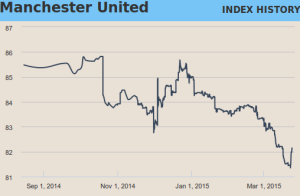At a time when sports have evolved from singular events to an almost ubiquitous integration into their fans’ lives via extensive betting schemes and addictive fantasy games, the official team rankings are still only determined by only a handful of events. Match results are obviously the only thing that matters to the teams, but there are other indicators out there that can be used to arrange the teams in alternative `power rankings`. The form table is one example of such a ranking, which, although based on an even smaller number of events, fluctuates a lot more than the league table itself. But now, the foots.ie index introduces a truly dynamic, stock market-like ranking, starting with football but essentially applicable to any sport.
How does the foots.ie index work you ask? While it integrates a number of different factors, its most important feature is that it sidesteps the pitfall of 3-1-0 win-draw-loss points accumulation system. Instead, it looks at the predicted probabilities of each outcome for any given match and adjusts the index of the participating teams accordingly. This approach allows the system to integrate a much larger set of factors into the ranking, from such general ones as the (defensive/offensive) form of a team and its history against a specific opponent to the more recent developments like suspensions, injuries and even training ground bust-ups!
At the end of the day, only one team can win a match, but the foots.ie index can tell you who is actually on top! Check out the English Premier League version of the new foots.ie index and see how your team’s stock fares in comparison to its actual position in the league.



